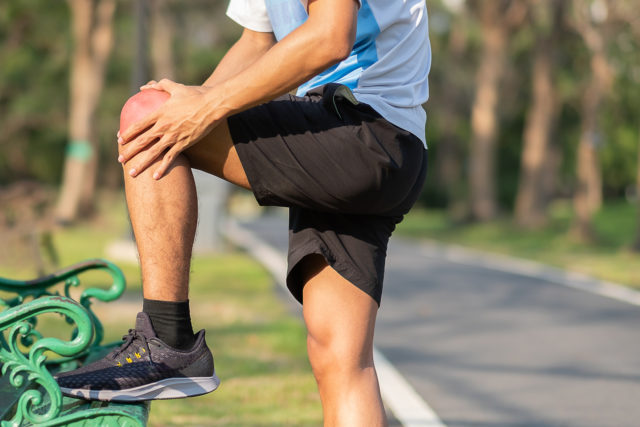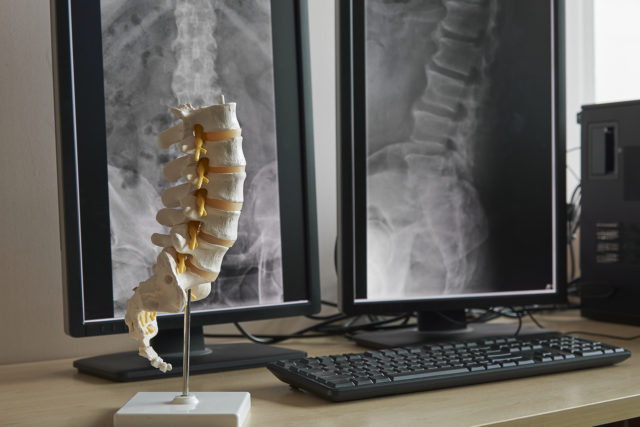 An Anterior Cruciate Ligament (ACL) tear is an injury impacting major ligaments in the knee. It is a key concern for many sports enthusiasts because such ACL tears occur mostly during sports activities that involve jumping, landing, sudden stops, or changes in direction.
An Anterior Cruciate Ligament (ACL) tear is an injury impacting major ligaments in the knee. It is a key concern for many sports enthusiasts because such ACL tears occur mostly during sports activities that involve jumping, landing, sudden stops, or changes in direction.
Examples of such sports include football, basketball, soccer, or downhill skiing. Also, these ruptures are more common in women than in men because of the difference in anatomy.
Once you sustain an ACL injury, you might require surgery, but that depends on factors like your activity level and severity of damage. With advancements in the field of reconstruction surgery, athletes can benefit from hamstring grafts, patellar tendon graft along with allografts. These prove effective in restoring both function and strength to the injured knee.
Even so, the ability of an athlete to go back to an active lifestyle successfully/full recovery after ACL reconstruction depends on the absence of three prevalent complications.
- Quadriceps weakness
- Flexion contracture (of the muscle group)
- Patellofemoral pain syndrome (PFPS)
Many physicians will use the patellofemoral pain syndrome as a “catch-all” diagnosis for the myriad of symptoms associated with anterior knee pain, especially after ACL reconstruction.
Signs and Symptoms of Anterior Cruciate Ligament Rupture
Once you sustain the injury, you will hear a popping sound from your knee. Other common symptoms include:
- Pain and swelling
- Loss of full range motion
- Discomfort when walking
- Joint tenderness
- Inability to bear leg weight even with minimal pain
- Feeling of instability
Causes
Several movements can cause an anterior cruciate ligament tear. These include:
- Slowing down during a run
- Incorrectly landing from a jump
- Rapidly changing direction
- Stopping suddenly
- Direct contact or collision like during a tackle
- When a knee is twisted or bent backward
While sport accidents are the most common causes of ACL injuries, you can sustain an ACL tear from missing a step in a staircase, falling off a ladder, or being in a car accident.
Risk factors
There are several risk factors for an ACL injury, and they include:
- Gender
- Active involvement in sports like football, gymnastics, basketball, soccer, and downhill skiing
- Using defective sport equipment like ski bindings
- Wearing ill-fitting sportswear
- Having a history of an ACL tear
Outcome and treatment
When you experience an ACL injury, you might not be able to walk correctly. An ACL injury causes a partial or complete tear of tissue and is usually very painful. Once you visit a doctor, they will recommend treatment based on the severity of the injury. Treatment options include first aid, medications, physical therapy, or surgery.
Massage Therapy for Anterior Cruciate Ligament Tear
One aspect of physical therapy for ACL is massage. Therapeutic massage therapy has the following benefits:
- Reduce pain and swelling (inflammation)
- Increase blood circulation and joint mobility
- Accelerate the healing process
- Lower the aggregation of scar tissue forming around the site of the injury
During a therapeutic massage, therapists target surrounding muscles, joints, or other specific structures to reduce strain. And once you’ve achieved success in ensuring they’re relaxed, a physician can then start restoring them to their proper alignment and flexibility.
Massage therapy is considered a safe and effective complementary treatment for many muscle and joint problems—including ACL. The type of massage and the number of sessions you will require will depend on your injury. At the end of all of your sessions, you will have regained full range of motion without any pain.
While massage therapy is effective in treating ACL, it must be done correctly for maximum results. Ensure you get your massage therapy from a professional therapist. If you would like to learn more about massage therapy or attend massage school, call us today. Also contact the Northwest Academy admissions department for any massage related questions.

Degenerative Disc Disease & Massage

Degenerative disc disease (DDD) is a medical condition where one or more discs in the back lose strength. Despite the name, degenerative disc disease isn’t technically a disease but a progressive condition that worsens over time due to wear and tear, or injury.
The discs in your back are situated in between the vertebrae of the spine and act as cushions and shock absorbers. They help you stand up straight and move through everyday motions, such as bending over or twisting around. As people age, DDD can worsen and cause mild to extreme pain that can interfere with your everyday activities.
Symptoms of Degenerative Disc Disease
Some of the most common symptoms of degenerative disc disease include pain that:
- Primarily affects the lower back
- Could extend to legs and buttocks
- Stretches from neck to arms
- Can be worse from sitting
- Worsens after bending or twisting
- Comes and goes in a few days or extends to several months
People with DDD might exhibit less pain after walking or exercise. Additionally, DDD can cause weakened leg muscles and numbness in your arms or legs.
Causes of Degenerative Disc Disease
DDD is primarily caused by natural wear and tear of spinal discs. Over time, discs tend to dry out and lose their support and function, leading to pain and other symptoms. DDD can start developing in your 30s or 40s and progressively worsen as you age. However, the condition can also be caused by overuse from sports or repetitive activities, or injury. Once a disc is damaged, it can’t repair itself.
Risk Factors
Age is the major risk factor for degenerative disc disease. The discs in between the vertebrae often shrink down and lose their cushiony support as people age. Almost every adult above the age of 60 has some form of disc degeneration. However, not all cases cause pain.
Long-term repetitive activities that place a lot of pressure on certain discs can also increase your risk. Other risk factors include car accidents, overweight or obesity, and a sedentary lifestyle.
Diagnosis of DDD
An MRI can help detect degenerative disc disease. Your doctor may recommend this type of imaging test based on a physical exam or an investigation into your symptoms and health history. Imaging tests can reveal damaged discs and help rule out other triggers of pain. When you receive a diagnosis of DDD, it does not mean that you’re disabled or headed for a downward spiral of spinal degeneration. In fact, DDD is often a part of the natural aging process that we all go through at some point in life. And the good news is that you can mitigate the associated pain through a variety of treatment solutions, including massage therapy.
Massage Therapy Treatment for DDD
From a Massage Therapy point of view, the approach in treating DDD is to strike a balance between reducing muscle tension and enhancing traction (decompressing the targeted vertebral segments). Finding a “green zone” of treatment is critical since the spasms that occur through the neck or low back happen because the body is trying to protect that area. By applying slow, repetitive, methodical massage between soft tissue and joint mobilization (spinal decompression), massage therapy can help relieve pain and allow you to move easier and execute strengthening exercises efficiently.
Massage therapy generally helps in these three ways:
- Increasing Blood Flow and Circulation: Proper blood circulation ensures that critical nutrients flow back fully to the strained muscles and tissues. This makes the muscles/tissues stronger, helping relieve the strain coming from the degenerating discs.
- Decreasing Tension: The muscles can become tense as they struggle to compensate for the weakening discs. When these muscles are manipulated during the massage, they become relaxed, which improves the range of motion and flexibility.
- Increasing the “feel good” chemical: Massage therapy releases Endorphins, a mood-enhancing chemical that is released in the brain. This “feel good” chemical helps in reducing pain and enhancing recovery.
Prognosis Possibilities
Without treatment or therapy, DDD can gradually progress and cause more adverse symptoms. While surgery is a treatment option, other less invasive treatments such as massage therapy have been found to be just as helpful yet less costly. A clinical study involving a 66-year-old female patient with cervical degenerative disc disease in her lateral left facet joint recorded impressive outcomes. The patient was experiencing symptoms of severe neck pain accompanied by restricted cervical range of motion. She also exhibited radicular left shoulder and arm pain. The objective of the study was to determine the effect of therapeutic massage on the patient’s symptoms and impairments of cervical DDD.
After multiple treatment sessions, the patient’s symptoms had decreased and cervical ROM had moderately improved. There was also a reduction in reported pain and an improvement in functional daily activities. This is an indication that massage therapy is a favorable treatment intervention for DDD symptoms.
Bottom Line
Massage can help improve the symptoms associated with Degenerative Disc Disease for a prolonged duration of time as long as you continue to follow the maintenance schedule that your Massage Therapist lays out. Massage therapy typically reduces muscle strain, improves flexibility, and mitigates pain. However, you can achieve the best results by working in conjunction with other health care professionals. Keep open communication between your doctor and your massage therapist to ensure the best treatment.
To learn about becoming a massage therapist in Seattle contact one of the following local massage schools; Northwest Academy for the Healing Arts or Seattle Clinical Massage School

10 Benefits of Attending a Hybrid (Online & In-Person) Massage Program
 Clear Benefits For Professionals In Multiple Fields
Clear Benefits For Professionals In Multiple Fields
Whether you’re in massage therapy already, you work as a registered nurse, assist in physical therapy offices, operate as a fitness trainer, lead yoga classes, instruct Pilate courses, or assist seniors at a nursing home, there are clear benefits to programs from hybrid massage schools.
When you can simultaneously study online, and in person, you get the best of both worlds. We’ll explore some key benefits of hybrid training here to help give you a better idea of how such learning can work for you.
1. Education On Your Schedule
It’s hard enough to work, let alone get a simultaneous supplemental education. If you’re not working, it can still be hard to learn owing to other basic factors of day-to-day life. With hybrid massage schools, you can use online courses for inconvenient scheduling; then drop into live classes when you have the ability.
2. Work And Study Simultaneously
Many schools require intensive attendance to acquire certification. In today’s world, that’s just not feasible for most. The cost of living just keeps getting higher, and time is literally money. With hybrid massage schools, you can maximize yours.
3. Expedite Tech Familiarity, Learning New Programs Like Zoom
Zoom is a program for face-to-face group interaction that is presently revolutionizing online education. Technology resources like these often have collateral potential beyond the classroom.
Whatever digital interface you use for your hybrid massage schools, you’ll be able to take that knowledge with you. This can come in handy elsewhere, as today’s world has ample opportunity for non-centralized online interaction.
4. Make New Contacts Locally And Across The Country–Even The World
With online hybrid massage schools, you’ll be able to meet people who are in the same field, but don’t live local to where you are. This allows you to make national and international contacts which give you the ability to expand your business.
5. Absorption Of Cutting-Edge Knowledge As Soon As It’s Available
New learning in terms of massage theory and application develop like breakthroughs in any medical arena. Medicine isn’t presently a monolith, and professionals find out new things pertaining to the human body all the time. You want to incorporate new learning into present practices whenever possible, and if you’re just starting out, it’s prime to be on the cutting edge.
6. Segmentation Of Learning: Theory And Hands-On As You Need It
Much of what you learn doesn’t actually require you to have any hands-on interaction. Accordingly, when you can segment your learning, you can apply this aspect of massage school as you need it, rather than have to spend days taking notes that would have been just as appropriately harvested from an online course.
7. Smaller Class Sizes And Direct Engagement With Educators
Online courses afford you the opportunity to work with a close-knit group, and obtain specific instruction from your educator. This isn’t often possible in larger, traditional courses; you might end up just a statistic in massage schools without hybrid options.
8. The Latest Available Research-Based Educational Opportunities
Research from educational facilities online have access to global breakthroughs, meaning not only do you get the latest research, you are able to obtain that research from a source with greater reach than location-based institutions can often provide.
9. Assistance With Career Placement
Career placement through hybrid massage schools provides you opportunities outside your locality. Localized options without an internet component will have limited ability to get you hired beyond your region.
10. Access To Experienced Faculty
Online schools who also offer physical classroom experiences must provide educators that can handle either, and have cutting-edge acumen in their field. You’ll likely find more expertise through these solutions than you would in a strictly physical environment.
Educationally Branching Out
There are a lot of reasons to go with hybrid massage schools when you’re adding to your therapeutic skill set, or acquiring such knowledge for the first time.
Experienced faculty, career placement, research-based cutting edge options, scheduling around work, more intimate class sizes, learning segmentation, a broad array of contacts, and new technology familiarity are just a few of many benefits from this educational option. If you haven’t looked into hybrid massage schools, this might be a wise step.
Learn more about our hybrid / online massage program option here





